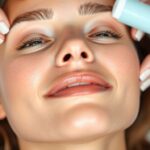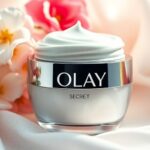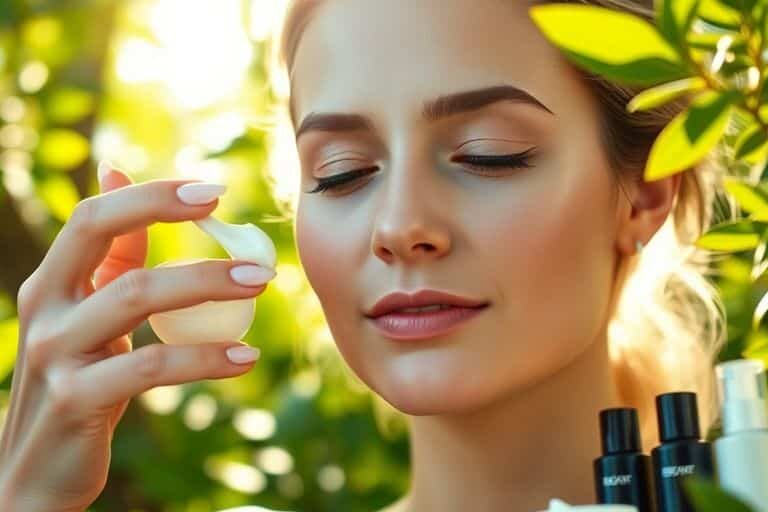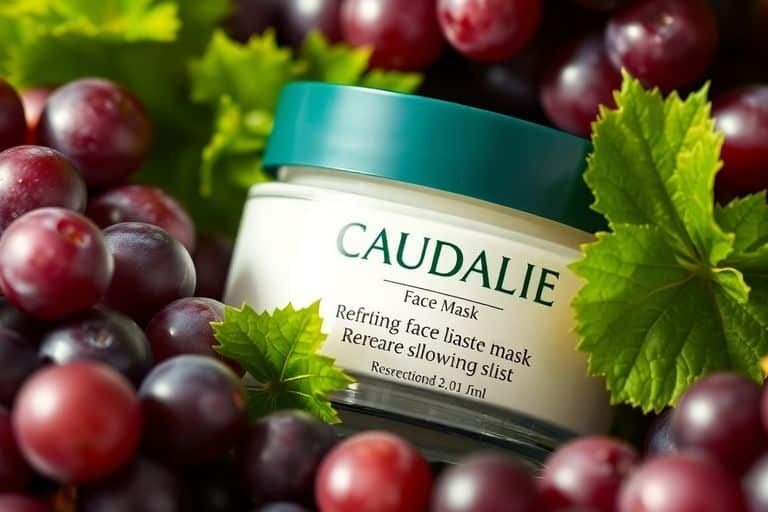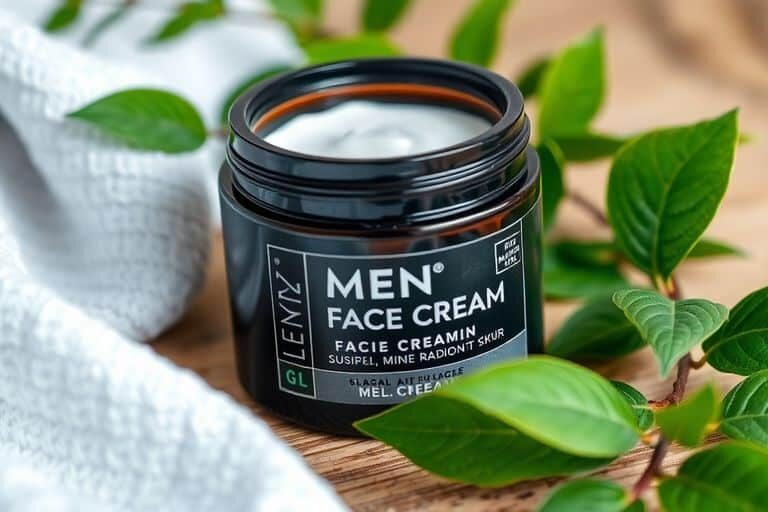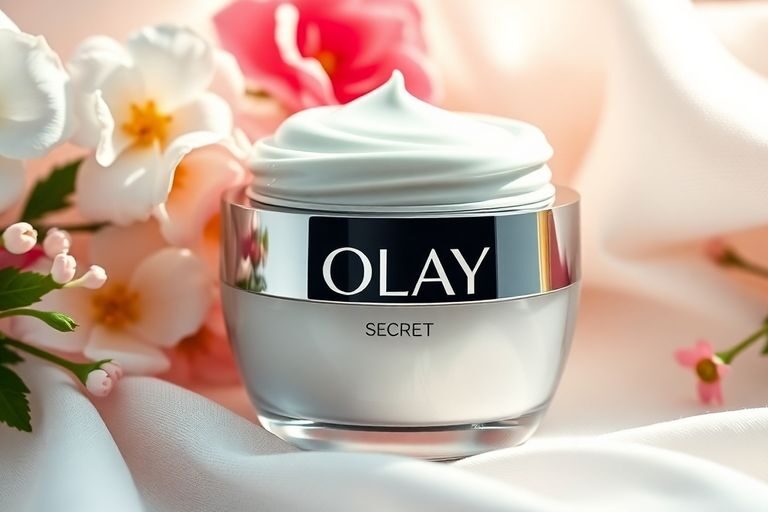Radiant skin is something many of us aspire to, but achieving it often feels like a challenge. The good news is that skin functional products are here to help. These innovative formulations are designed not just for surface-level beauty, but to tackle skin concerns at their core. With the right knowledge and approach, you can transform your skincare routine and enjoy the long-term benefits of a healthier complexion.
Key Takeaways
- Skin functional products are tailored to address specific skin issues, going beyond traditional beauty products.
- Look for active ingredients that suit your skin type for the best results.
- Personalised skincare routines can significantly improve the effectiveness of your regimen.
- Multi-functional products save time and money by combining several skincare benefits in one application.
- Consistent use of skin functional products can lead to improved skin health and resilience over time.
Understanding Skin Functional Products
Definition and Purpose
Okay, so what are skin functional products? Basically, they’re skincare items designed to do more than just sit on the surface. They’re formulated with specific active ingredients that target particular skin concerns and work to improve skin health at a deeper level. Think of them as the overachievers of the skincare world. They’re not just moisturising; they’re actively working to reduce wrinkles, fade dark spots, or clear up acne. The main goal? To give you visible, lasting results.
Key Ingredients to Look For
When you’re shopping for skin functional products, it’s all about knowing what ingredients to look for. Here’s a quick rundown:
- Retinoids: These are vitamin A derivatives that boost collagen production and reduce fine lines. They’re pretty powerful, so start slow!
- Vitamin C: A potent antioxidant that brightens skin and protects against environmental damage. I always look for this in my morning serum.
- Hyaluronic Acid: This stuff is a hydration hero. It draws moisture into the skin, leaving it plump and dewy. Perfect for dry skin like mine.
- Peptides: These little guys help to firm the skin and reduce wrinkles. They’re like messengers that tell your skin to produce more collagen.
- AHAs/BHAs: These are chemical exfoliants that sleugh off dead skin cells, revealing brighter, smoother skin underneath. Skincare in cosmetology often includes these ingredients.
How They Differ from Traditional Products
Traditional skincare products often focus on surface-level hydration and cleansing. They’re fine for basic maintenance, but they don’t always deliver significant, long-term improvements. Skin functional products, on the other hand, are all about active ingredients and targeted results. They penetrate deeper into the skin to address specific concerns, like ageing, acne, or hyperpigmentation. It’s like the difference between putting a plaster on a wound and actually treating it with antibiotics. One just covers it up, while the other helps it heal.
I’ve found that switching to skin functional products has made a noticeable difference in my skin. It’s brighter, smoother, and generally healthier-looking. It’s definitely worth investing in products that actually work!
The Science Behind Skin Functional Formulations
Active Ingredients Explained
Okay, so let’s get into the nitty-gritty of what makes skin functional products actually work. It’s not just fancy packaging and clever marketing, I promise! These products rely on active ingredients – the ones that are scientifically proven to affect your skin at a cellular level. Think of them as the workhorses of your skincare routine.
- Retinoids: These are vitamin A derivatives, and they’re basically the gold standard for anti-ageing. They boost collagen production, reduce fine lines, and even help with acne. They can be a bit irritating at first, so start slow!
- Vitamin C: This is a powerful antioxidant. It protects your skin from environmental damage, brightens your complexion, and can even help fade dark spots. Vitamin C is a must-have in any routine, in my opinion.
- Hyaluronic Acid: This is a humectant, which means it draws moisture from the air into your skin. It’s super hydrating and helps to plump up fine lines. If your skin is feeling dry, this is your best friend.
- Peptides: These are short chains of amino acids that help to stimulate collagen production. They’re like little messengers that tell your skin to get to work!
- AHAs/BHAs: These are chemical exfoliants that help to remove dead skin cells, revealing brighter, smoother skin underneath. AHAs are great for dry skin, while BHAs are better for oily or acne-prone skin.
The Role of pH in Skincare
Did you know that your skin has its own natural pH level? It’s slightly acidic, around 4.5 to 5.5. Maintaining this balance is super important for a healthy skin barrier. When your skin’s pH is off, it can lead to all sorts of problems, like dryness, irritation, and even breakouts.
That’s why it’s important to use skincare products that are pH-balanced. Harsh soaps and cleansers can strip your skin of its natural oils and disrupt its pH, so look for gentle formulas that won’t throw things out of whack. I always check the label to see if a product is pH-balanced before I buy it.
Clinical Studies Supporting Efficacy
It’s easy to get caught up in the hype of skincare, but it’s important to remember that not everything works as well as it claims to. That’s where clinical studies come in. These studies are designed to test the efficacy of skincare ingredients and products in a controlled environment.
Look for products that have been backed by clinical studies. This means that they’ve been proven to work in a scientific setting. It’s not a guarantee that they’ll work for you, but it definitely increases the odds.
Here’s a quick example of how clinical studies can influence product choices:
| Ingredient | Benefit | Study Example
Personalised Skincare: Tailoring to Your Needs
I reckon one of the biggest shifts I’ve seen in skincare is the move towards personalisation. It’s not just about grabbing any old product off the shelf anymore; it’s about finding what actually works for your skin. And honestly, it makes a world of difference.
Assessing Your Skin Type
First things first, you’ve gotta know your skin. Are you oily, dry, combination, or sensitive? It sounds basic, but so many people get this wrong! Here’s a quick rundown:
- Oily: Shiny skin, enlarged pores, prone to breakouts. I usually find my makeup slides off my face by midday if I don’t use the right products.
- Dry: Tight feeling, flaky patches, can feel itchy. My skin feels like it’s screaming for moisture, especially in winter.
- Combination: Oily in the T-zone (forehead, nose, chin), but dry elsewhere. It’s a tricky one because you need to balance different needs.
- Sensitive: Easily irritated, prone to redness, itching, or burning. Everything seems to make my skin angry!
There are a few simple tests you can do at home to figure it out. Wash your face with a gentle cleanser and don’t apply anything afterwards. After about an hour, check how your skin feels. Is it tight? Shiny? Both? That’ll give you a good clue. Or, you can use AI technology in skincare apps to get a better understanding of your skin.
Customising Your Routine
Once you know your skin type, you can start building a routine that actually works. This is where the fun begins! It’s all about finding the right products and ingredients for your specific needs. For example:
- Oily skin: Look for lightweight, oil-free moisturisers and cleansers with salicylic acid to help control oil production.
- Dry skin: Rich, hydrating creams with hyaluronic acid and ceramides are your best friends. Avoid harsh cleansers that strip your skin of its natural oils.
- Combination skin: You might need to use different products on different parts of your face. A gentle cleanser and a lightweight moisturiser for the drier areas, and a targeted treatment for the oily T-zone.
- Sensitive skin: Fragrance-free, hypoallergenic products are a must. Look for calming ingredients like aloe vera and chamomile.
Don’t be afraid to experiment a little, but always introduce new products slowly to see how your skin reacts. And remember, consistency is key! It takes time to see results, so stick with your routine for at least a few weeks before deciding if it’s working for you.
Benefits of One-to-One Consultations
If you’re feeling overwhelmed, or just want some expert advice, a one-to-one consultation with a skincare professional can be a game-changer. They can assess your skin, discuss your concerns, and recommend a personalised routine tailored to your specific needs. Plus, they can help you navigate the confusing world of skincare ingredients and medical-grade skincare products.
I’ve found that getting a professional opinion can save you a lot of time and money in the long run. Instead of wasting money on products that don’t work, you can invest in a routine that’s actually effective. It’s like having a personal trainer for your skin!
Maximising Results with Multi-Functional Products
I’m all about getting the most bang for my buck, and when it comes to skincare, that means multi-functional products. Who has time for a million steps, right? Let’s dive into how these clever concoctions can seriously streamline your routine and boost your skin’s health.
Convenience and Efficiency
Multi-functional products are a godsend for busy people. They combine several benefits into one single product, saving you time and effort. Instead of layering on a bunch of different serums and creams, you can get away with just one or two power-packed formulas. Think of it as a skincare shortcut that doesn’t skimp on results. For example, you can find retinol products that also hydrate, cutting down on dryness and irritation.
- Fewer steps in your routine mean less time spent in front of the mirror.
- Reduces the risk of forgetting a step or applying products in the wrong order.
- Perfect for travel – pack less and still maintain your skincare goals.
I used to dread my skincare routine because it felt like a chore. Now, with a few multi-functional heroes, it’s quick, easy, and I actually enjoy it.
Cost-Effectiveness
Let’s be real, skincare can get expensive fast. Buying individual products for every single concern adds up. Multi-functional products offer a more budget-friendly approach by tackling multiple issues at once. It’s like getting a two-for-one deal, but for your face!
- One product replaces several, reducing the overall cost of your routine.
- Less packaging means less waste, which is good for your wallet and the planet.
- Look for products with concentrated formulas – a little goes a long way.
Streamlining Your Skincare Routine
I used to have so many products that my bathroom cabinet looked like a chemist’s shop. It was overwhelming, and honestly, I wasn’t even using half of them consistently. Multi-functional products help simplify things, making your routine more manageable and, therefore, more effective. A simplified routine means you’re more likely to stick with it, and consistency is key to seeing real results.
- Reduces clutter and confusion, making your routine less daunting.
- Helps you focus on the essentials, rather than getting caught up in trends.
- Makes it easier to identify what’s working and what’s not for your skin.
Addressing Common Skin Concerns
Solutions for Acne-Prone Skin
Dealing with acne can be frustrating, but the right skin functional products can make a real difference. The key is to look for ingredients that target the root causes of acne: excess oil, inflammation, and bacteria. I’ve found that incorporating products with salicylic acid or benzoyl peroxide can be super helpful for exfoliating and killing bacteria.
- Salicylic Acid: Helps to unclog pores and reduce inflammation.
- Benzoyl Peroxide: Kills acne-causing bacteria.
- Niacinamide: Reduces redness and inflammation, and can also help control oil production.
It’s important to introduce these ingredients slowly to avoid irritation. Start with a low concentration and gradually increase as your skin tolerates it. Also, remember to use a non-comedogenic moisturiser to keep your skin hydrated.
Anti-Ageing Benefits
Who doesn’t want to keep their skin looking youthful? Skin functional products are packed with ingredients that can help reduce the signs of ageing. I’m talking about fine lines, wrinkles, and loss of elasticity.
- Retinoids: Boost collagen production and improve skin texture. You can use Night Shift Rx Face Serum to improve texture.
- Vitamin C: A powerful antioxidant that protects against free radical damage and brightens the skin. You can use Liquid Cloak Vitamin C Serum for an extra glow.
- Peptides: Help to stimulate collagen production and improve skin firmness.
| Ingredient | Benefit |
|---|---|
| Retinoids | Boosts collagen, improves skin texture |
| Vitamin C | Antioxidant, protects against free radicals |
| Peptides | Stimulates collagen, improves firmness |
Managing Sensitive Skin
Sensitive skin can be a real pain, reacting to almost everything. The goal is to find products that are gentle, soothing, and free from harsh chemicals. I always recommend looking for products with these ingredients:
- Ceramides: Help to repair and strengthen the skin barrier.
- Hyaluronic Acid: Provides intense hydration without causing irritation.
- Aloe Vera: Soothes and calms irritated skin.
It’s also a good idea to avoid products with fragrances, alcohol, and other potential irritants. Patch testing new products is a must! And remember, less is more – a simple routine with gentle products is often the best approach for sensitive skin.
Incorporating Skin Functional Products into Your Routine

Okay, so you’re ready to get serious about your skincare. Great! But how do you actually use these skin functional products? It’s not as simple as slapping stuff on your face and hoping for the best. Let’s break it down.
Morning vs Evening Applications
Think of your morning and evening routines as having different goals. In the morning, it’s all about protection. In the evening, it’s about repair and rejuvenation. This means using different products at different times.
- Morning: Focus on antioxidants (like vitamin C) to fight off environmental damage, sunscreen to protect from UV rays, and lightweight moisturisers. I like to keep it simple in the AM.
- Evening: This is when you bring out the big guns – retinoids, AHAs/BHAs, and richer moisturisers. These ingredients can make your skin more sensitive to the sun, so they’re best used at night. Plus, your skin naturally repairs itself while you sleep, so you’re boosting that process.
Layering Techniques
Layering is key to getting the most out of your products. But there’s a right way and a wrong way to do it. The general rule is to apply products from thinnest to thickest consistency. This helps ensure that each product can properly absorb into your skin. If you’re using multi-functional skincare products, you can simplify this process.
Here’s a basic layering order I usually follow:
- Cleanser
- Toner (optional)
- Serum (water-based)
- Eye cream
- Moisturiser
- Oil (if using)
- Sunscreen (morning only)
Don’t overload your skin! Too many layers can lead to clogged pores and irritation. If you’re new to layering, start with just a few products and gradually add more as your skin gets used to it.
Tips for Best Results
Alright, here are some extra tips to help you get the best possible results from your skin functional products:
- Be consistent: Skincare is a marathon, not a sprint. You won’t see results overnight. Stick with your routine for at least a few weeks before deciding if a product is working for you.
- Patch test: Always patch test new products, especially if you have sensitive skin. Apply a small amount to a discreet area (like your inner arm) and wait 24-48 hours to see if you have any reaction.
- Don’t over-exfoliate: Exfoliating is great for removing dead skin cells, but overdoing it can damage your skin barrier. Limit exfoliation to 1-2 times per week.
- Listen to your skin: Pay attention to how your skin feels and adjust your routine accordingly. If your skin feels dry or irritated, cut back on active ingredients and focus on hydration.
- Stay hydrated: Drinking plenty of water is essential for healthy, glowing skin. Aim for at least 8 glasses a day.
- Get enough sleep: Sleep is when your skin repairs itself, so make sure you’re getting enough shut-eye. Aim for 7-8 hours of sleep per night.
By following these tips, you’ll be well on your way to achieving radiant, healthy skin with skin functional products.
Long-Term Benefits of Consistent Use

Alright, let’s talk about the real payoff – what happens when you actually stick with a skin functional routine. It’s not just about quick fixes; it’s about building something that lasts. I’ve seen it myself, and the results are pretty amazing.
Building a Healthy Skin Barrier
Think of your skin barrier as your skin’s bodyguard. It keeps the good stuff in (hydration) and the bad stuff out (pollution, irritants). Consistent use of skin functional products really helps to strengthen this barrier. A strong barrier means less sensitivity, less dryness, and an overall healthier complexion.
- Regular use of moisturisers helps maintain hydration levels.
- Products with ceramides and fatty acids reinforce the skin’s natural structure.
- Avoiding harsh ingredients prevents damage to the barrier.
It’s like building a house. You need a solid foundation (your skin barrier) before you can start decorating (addressing specific concerns). Neglecting the foundation will eventually lead to problems down the road.
Preventing Future Skin Issues
Prevention is always better than cure, right? That’s especially true when it comes to skin. By using skin functional products consistently, you’re essentially investing in your skin’s future. You can prevent a whole host of problems before they even start. Proper skin care helps fortify the skin’s natural barrier.
- Antioxidants protect against free radical damage, slowing down ageing.
- Sunscreen prevents sun damage, reducing the risk of wrinkles and dark spots.
- Regular exfoliation prevents clogged pores and breakouts.
Enhancing Overall Skin Health
It’s not just about looking good; it’s about feeling good too. When your skin is healthy, it shows. You’ll have a natural glow, a smoother texture, and an overall sense of confidence. Plus, healthy skin is better at doing its job – protecting you from the elements and regulating your body temperature. Committing to a consistent skincare routine over time can lead to significant skin transformations.
- Improved hydration leads to plumper, more radiant skin.
- Reduced inflammation soothes irritation and redness.
- Balanced oil production prevents breakouts and shine.
Basically, consistent use of skin functional products isn’t just a trend; it’s a lifestyle choice that pays off big time in the long run. Trust me, your future self will thank you for it!
Using a product regularly can lead to amazing long-term results. When you stick to a routine, you give your skin the chance to improve and stay healthy over time. This means you can enjoy a glowing complexion and fewer skin issues in the future. Don’t wait to start your journey to better skin! Visit our website today to learn more about how consistent use can benefit you!
Embrace the Power of Functional Skincare
In conclusion, incorporating skin functional products into your routine can truly transform your skincare game. These products not only simplify your regimen but also tackle multiple skin concerns at once, making them a smart choice for anyone looking to achieve that coveted glow. By focusing on quality ingredients and personalised solutions, you can nurture your skin effectively without the fuss. Remember, radiant skin is not just about looking good; it’s about feeling confident and comfortable in your own skin. So, take the plunge, explore the options available, and find what works best for you. Your skin will thank you for it!
Frequently Asked Questions
What are skin functional products?
Skin functional products are specially designed skincare items that target specific skin issues. They use active ingredients to help improve your skin’s health and appearance.
How do I know which ingredients are best for my skin?
Look for ingredients that match your skin type and concerns. For example, if you have dry skin, you might want products with hyaluronic acid or glycerin.
What is the difference between functional and traditional skincare products?
Functional products focus on treating specific skin problems with active ingredients, while traditional products might just offer basic moisture or cleansing without targeting issues.
Can I use multiple functional products together?
Yes, you can! Just make sure to layer them correctly and choose products that complement each other for the best results.
How often should I use functional skincare products?
It’s best to use them regularly, as directed on the product packaging, to see long-term benefits for your skin.
What should I do if my skin reacts badly to a product?
If you notice irritation or an allergic reaction, stop using the product immediately and consult a dermatologist for advice.

